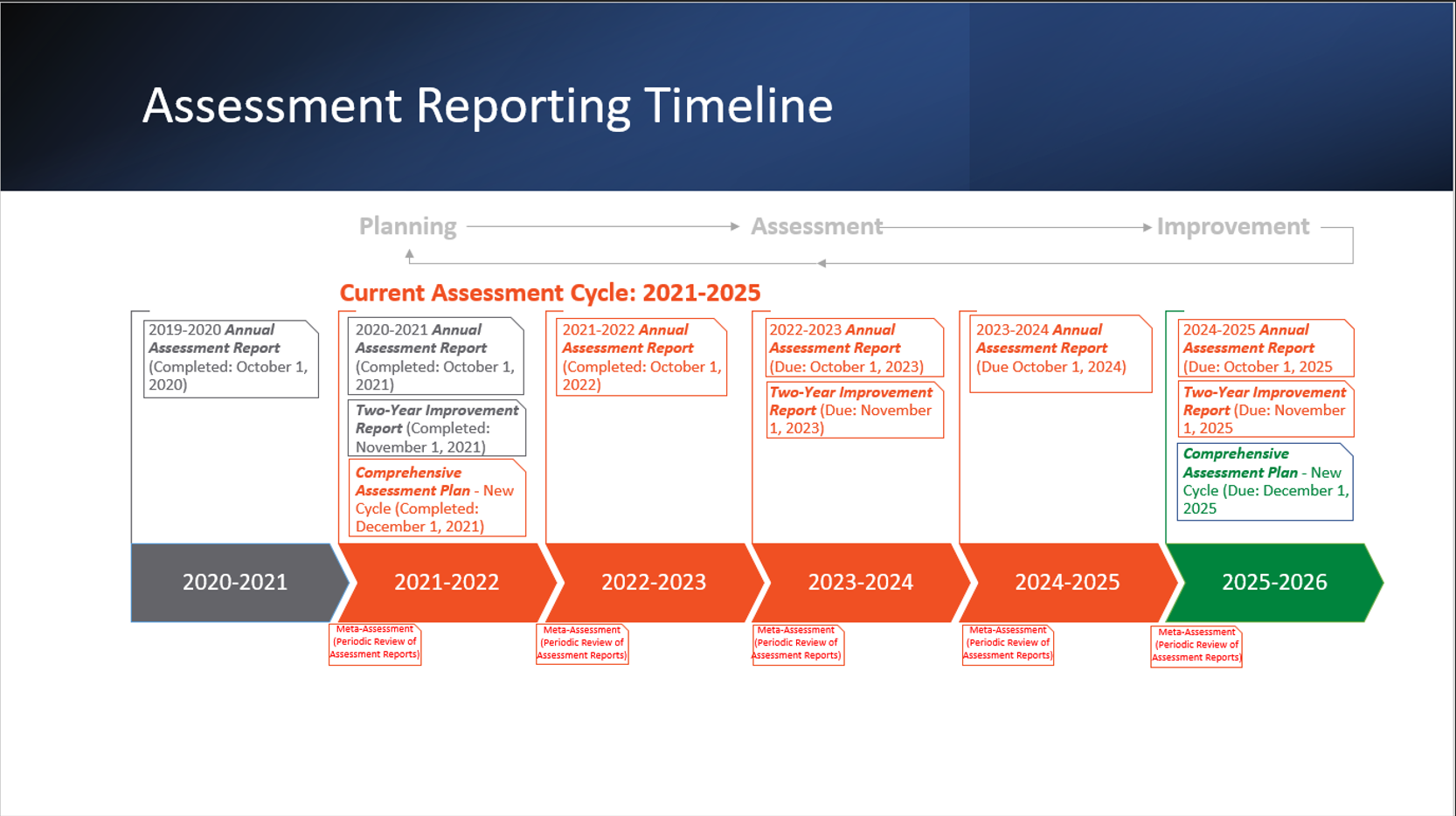Assessment Reporting Expectations

UTRGV’s Assessment Framework
UTRGV adopted an assessment framework in 2017-2018 to (a) capture the different phases of the assessment and continuous improvement process and (b) meet the demands of varied assessment approaches and timelines as established by programs across all academic colleges and schools. The multi-year framework was founded on the Assess-Intervene-Assess model for assessment (A Simple Model for Learning Improvement). It centers on providing educational programs sufficient time and flexibility for not only planning assessment activities and collecting data, but also for developing, implementing, and monitoring interventions/actions for seeking improvement. A distinct feature of the UTRGV assessment framework is the movement away from a one-size-fits-all rigid assessment timeline and process to one that is adaptable and lends itself to a sustainable, yet robust assessment of student learning. In other words, programs are not required to complete all phases of the assessment and continuous improvement cycle at the same time for all SLOs in one year. This framework affords programs significant discretion for planning and implementing each phase of the process for any number of SLOs across multiple years, as long as they demonstrate that assessment is ongoing and robust and that assessment data/results are used to seek further improvement to student learning. Specific requirements for each assessment report are detailed below. The OCIA recognizes that to successfully manage a decentralized process of self-assessment down to the program level, autonomy, with clear guidelines and expectations, as well as robust assessment support, are key.
Reporting Requirements
Three reporting expectations established within the context of UTRGV’s framework are used by educational programs to describe developments/activities occurring during each phase of the assessment and continuous improvement process described above. In short, these reports require educational programs to:
- identify expected outcomes of student learning,
- assess the extent to which these outcomes are achieved, and
- provide evidence of seeking improvement based on analysis of results.
The information provided in Table 1 illustrates how each institutional assessment report aligns with each phase of UTRGV’s assessment and continuous improvement process and with SACSCOC's expectations of institutional effectiveness. The table also details how frequently each report is completed, what information is required, and when the latest reports were submitted to the OCIA.
| Report | Purpose/Alignment to elements of CS 8.2.a | Frequency | Report Contents |
| Comprehensive Assessment Plan (CAP) | To identify/define program expected outcomes of student learning, and to establish a multi-year assessment approach/timeline for assessment of Student Learning Outcomes and re-assessing them after improvements have been implemented. |
Prospective multi-year assessment plan completed once every four years. |
|
| Annual Assessment Results Report |
To document the extent to whichSLOs were achieved (results/analysis), and to design actions for further improvement that are aligned to SLOs during a given academic year. |
Retrospective report for assessments completed once every year; description of any planned/proposed actions for seeking further improvement to student learning. |
|
| Two-Year Improvement Report |
To summarize actions taken for seeking improvement (i.e., enhancements to the curriculum, instruction, or assessment methods) spanning two years, and to reflect on the impact that any actions or interventions have had on student learning. |
Retrospective report of improvements made to student learning during a two-year period. Report is completed once every two years. |
Context and reflection about all relevant actions that have been implemented to seek improvement to student learning based on analysis of assessment results |
Reporting Timeline

